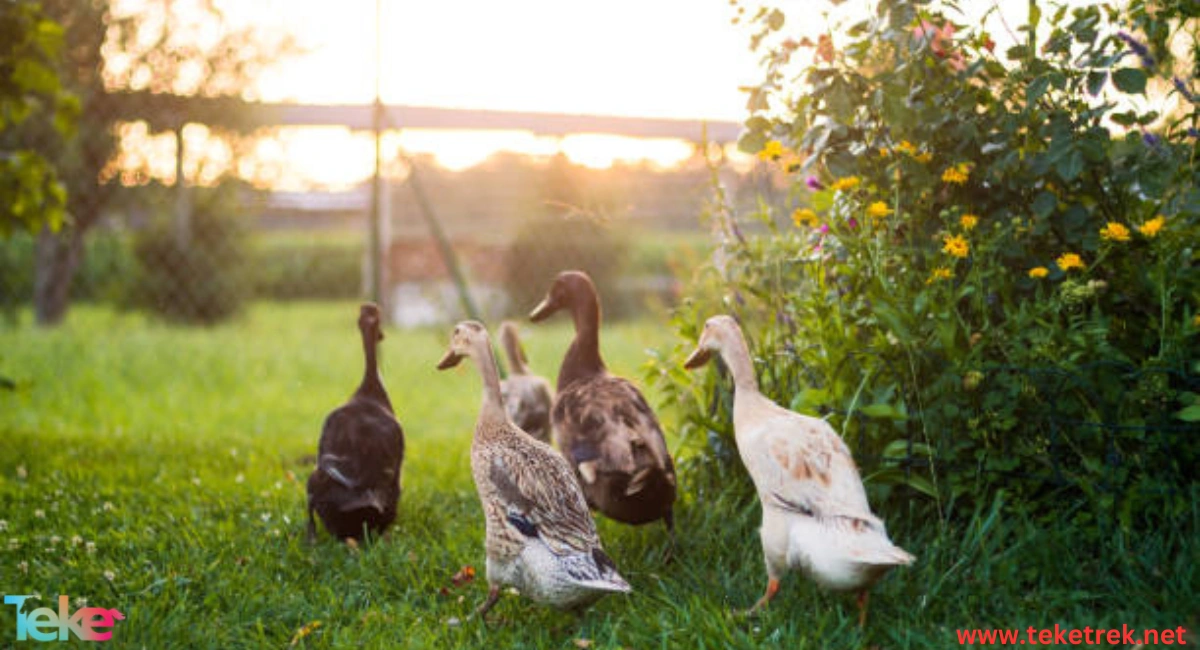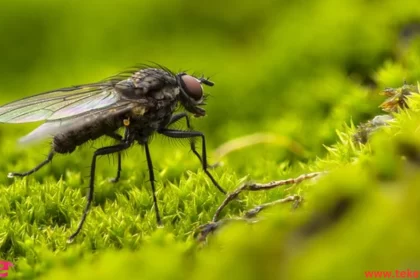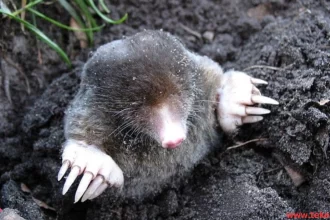They have been bred for about 2000 years in Southeast Asia.
They possess one of the most distinctive body types among all duck breeds worldwide.
Let’s learn more about it from teketrek.
What is the nature of Indian Runner Ducks?
Indian Runner Ducks are characterized by their lack of bad habits and shy nature. When Indian Runner Ducks sense danger, they make a lot of noise and then flee. They sometimes attempt to fly away.
Fascinating World of The Honey Bee: Nature’s Tiny Miracle Worker
Facts about The Indian Runner Ducks:
Known as “Penguin Ducks” due to their unusual upright posture resembling penguins, Indian Runner Ducks stand tall, making them appear much taller than other duck breeds.
They are considered domesticated waterfowl.
This posture is a result of the pelvis being positioned towards the tail area compared to any other domestic duck breed.
Winter reptile care tips: Tips to keep your pets healthy and safe
The main behaviors of Indian Runner Ducks and their amazing characteristics:
Indian Runner Ducks cannot fly but can swim in ponds and pools.
They prefer living in open areas, where they search for worms, slugs, and insects in the fields.
Indian Runner Ducks rarely build nests to lay eggs; instead, they lay eggs in random places.
Specialists are still unable to determine the reason for this color change.
Indian Runner Ducks enjoy swimming and diving, and can stay in the water for a long time for food or entertainment.
They mate willingly here.
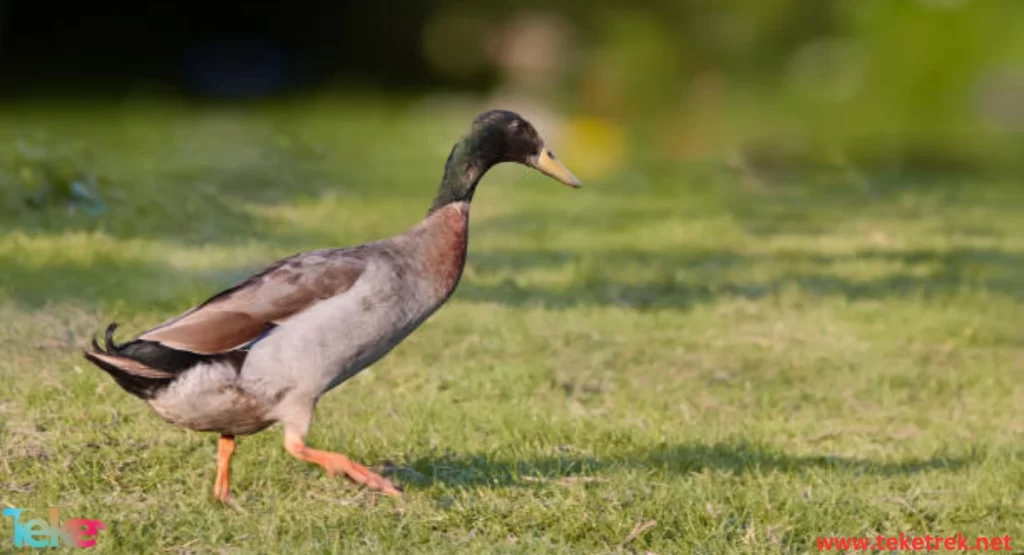
The Indian Runner duck size and specification
Body:Indian Runner Ducklings have a slender, round-shaped body.
Eggs, feather: with greenish-white eggs and narrow feathers.
They have different colored feathers, with white feathers seen in winter and black feathers in warm seasons.
The weight:The weight of Indian Runner Ducks ranges from about 1.4 to 2.3 kg.
Height: They reach a height of about 50 cm in females and 76 cm in males.
Head: Indian Runner Ducks have long, spatulate heads and possess a bill on the head.
The head of Indian Runner Ducks is more polished than other duck breeds.
The eye, neck: They have high-set eyes on the head, extremely long and thin necks that smoothly transition into the body.
Tail: Indian Runner Ducks have flat tails, with mature ducks having curls at the tip of the tail.
Where do Indian Runner Ducks live, and where can they be found?
Indian Runner Ducks live in South Asia and in the Malay Archipelago, a group of islands located in Indonesia and the Philippines.
Indian Runner Ducks have been introduced to Europe, specifically England. They can be kept in many parts of the world in private gardens.
What is the diet of Indian Runner Ducks, and what is their favorite food?
Indian Runner Ducks are carnivorous. They prefer earthworms, considering them their favorite meal. They also enjoy eating snail eggs and earthworms.
At times, Indian Runner Ducks consume clover and grass and may attack small lettuce plants.
Farmers can feed them grains such as corn, wheat, and barley.
Reproduction in Indian Runner Ducks:
It is known that Indian Runner Duck eggs are slightly larger than chicken eggs.
This type of duck is considered very lazy when it comes to incubation.
The eggs hatch after being incubated by another duck or with an incubator for 28 days.
A few days before hatching, the sounds of the ducklings inside the egg can be heard.
Then the ducklings start pecking at the shell and crawl out.
The young Indian Runner Ducklings need warmth and care for the first few weeks.
After that, they can go out with their parents.
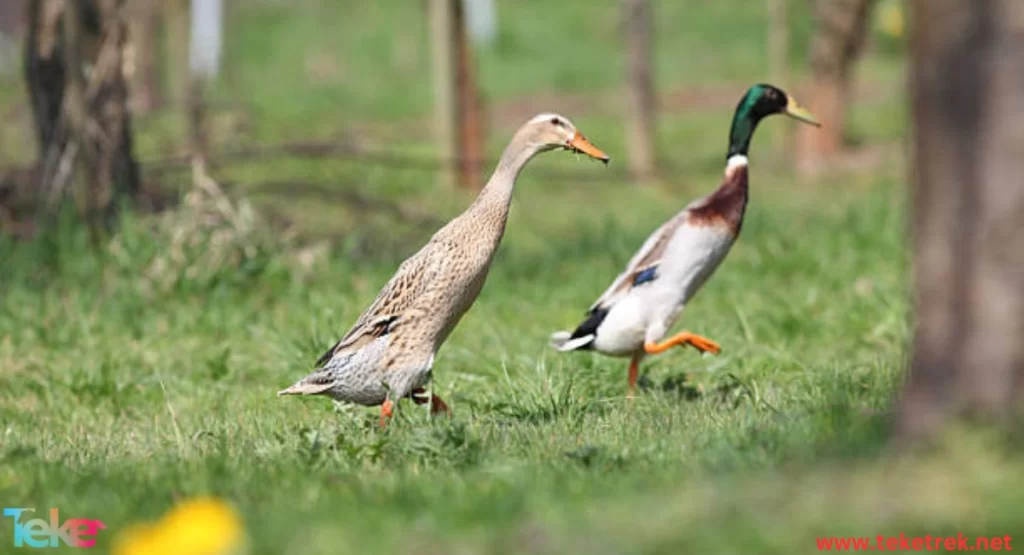
FAQs about Indian Runner Ducks
What are the advantages of this breed of ducks?
Indian Runner Ducks have many advantages, including:
-It lays a considerable number of eggs.
– Indian Runner Ducks are very healthy and resistant to diseases.
– The ducklings develop rapidly.
– Indian Runner Ducks have delicious meat with a muddy aroma, containing one-third fat.
What is the Indian runner duck known for?
Indian Runners have been selectively bred for their prolific egg-laying abilities. Additionally, they can serve as a source of meat and feathers. Known for being easy to handle, Indian Runners are often kept as pets. These ducks are also beneficial in gardens, as they consume insects and slugs while providing natural fertilizer.
Can Indian Runner ducks fly?
These ducks do not fly and rarely build nests or incubate their own eggs. Instead, they often run or walk around, dropping their eggs wherever they happen to be. As a result, duck breeders need to house their birds overnight or be diligent in collecting the eggs to protect them from being taken by other animals.
At what age do Indian runner ducks start laying eggs?
Indian Runners will start to lay between 20 and 24 weeks of age.
If Indian Runners are 24 weeks old after around September 1st, they typically won’t begin laying eggs due to the reduced daylight. Instead, they will start laying in the spring when daylight increases.
Do Indian runner ducks quack?
All ducks quack.
Runner ducks tend to produce a descending call of “Quack QUACK quack, quack… quack…. quack” when they are alarmed or making a demand, with the emphasis on the second quack, followed by a series of gradually softer quacks.fading quacks after.
Are blue runner ducks friendly?
The trained Indian duck is friendly.
Runner ducks are a robust breed, thriving in both cold and hot climates. The ducks are typically louder than the drakes and produce a distinctive quack sound.
In conclusion, it is important to emphasize the importance of conserving Indian Runner Ducks. Some studies suggest that their unique development has been shaped more by human intervention than natural evolution. They are known for their color, beauty, and the benefits of their meat and eggs. We hope we have provided you with valuable information and amazing facts that help you learn more about Indian Runner Ducks, a fascinating and highly admirable animal.
References

